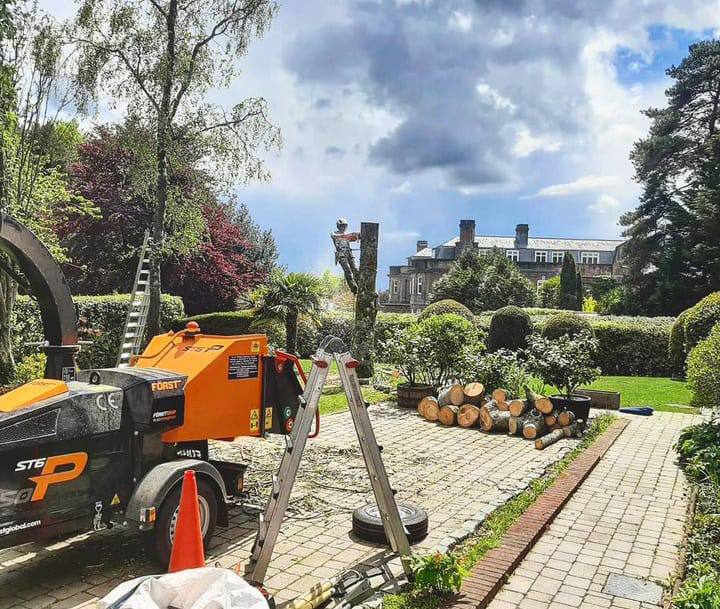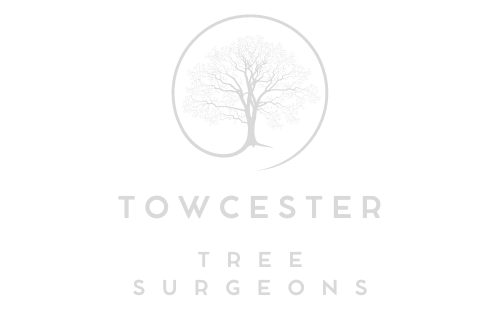Tree Crown Reduction: Working With Trees of Different Species
Introduction: At Towcester Tree Surgeons, we understand that every tree is unique. Tree crown reduction is vital to tree care, but the approach can vary significantly depending on the species. Trees have different growth habits, structural characteristics, and responses to pruning. This blog post will explore the importance of tailoring crown reduction techniques to the specific needs of various tree species, ensuring their health and longevity.
Understanding Tree Crown Reduction
Tree crown reduction involves carefully trimming a tree’s upper branches to reduce its overall size and improve its structure. This process helps manage tree growth, maintain safety, and enhance aesthetic appeal. However, improper crown reduction can lead to stress, disease, and structural weaknesses, especially if the unique requirements of different tree species are not considered.
Key Factors in Crown Reduction
1. Growth Patterns
Different tree species exhibit distinct growth patterns. Some trees grow rapidly and respond well to crown reduction, while others grow slowly and may require a more conservative approach.
- Fast-Growing Trees: Species like willows and poplars grow quickly and can tolerate more aggressive pruning. However, they also need more frequent maintenance to manage their rapid growth.
- Slow-Growing Trees: Oaks and beeches grow slowly and may be more sensitive to heavy pruning. To avoid stress and maintain their structural integrity, a gradual approach is essential.
2. Branch Structure
The branching structure of a tree influences how crown reduction should be performed.
- Broad-Leaved Trees: Trees like maples and elms have broad leaves and dense canopies. Thinning the canopy is often necessary for light penetration and air circulation, promoting healthier growth.
- Conifers: Coniferous trees like pines and spruces have a different branching structure. Crown reduction in conifers requires careful planning to avoid unsightly results and to ensure the tree remains aesthetically pleasing.
3. Tree Health and Age
The health and age of a tree play crucial roles in determining the appropriate crown reduction technique.
- Young Trees: Younger trees are generally more resilient and can recover quickly from pruning. However, it is essential to shape them carefully to establish a strong structure for the future.
- Mature Trees: Older trees may be more susceptible to stress and disease. Crown reduction should be done conservatively, focusing on removing dead or diseased branches and maintaining the tree’s natural shape.
Tailoring Crown Reduction to Specific Species
1. Oak Trees
Oak trees are known for their strength and longevity. When performing crown reduction on oaks, it is crucial to:
- Avoid Heavy Pruning: Oaks are sensitive to heavy pruning, which can lead to stress and decline. A gradual approach is recommended.
- Maintain Natural Shape: Focus on preserving the tree’s natural form and structure while removing dead or weak branches.
2. Maple Trees
Maples have a dense canopy and broad leaves. Key considerations for crown reduction include:
- Thinning the Canopy: Remove excess branches to improve light penetration and air circulation.
- Seasonal Pruning: Prune maples during the dormant season to minimise sap loss and reduce the risk of disease.
3. Pine Trees
Pine trees have a unique growth pattern and require specific techniques:
- Minimal Pruning: Pines do not respond well to heavy pruning. Limit crown reduction to dead or damaged branches.
- Shape Maintenance: Ensure the tree’s natural shape is preserved to maintain its aesthetic appeal.
4. Willow Trees
Willows grow rapidly and can become quite large. Effective crown reduction for willows involves:
- Frequent Pruning: Regular maintenance is necessary to manage their fast growth.
- Structural Pruning: Focus on creating a strong, balanced structure to support their rapid development.
Conclusion: Tree crown reduction is essential for maintaining your trees’ health, safety, and beauty. However, it is crucial to consider the unique requirements of different tree species to avoid potential risks and maximise benefits.
Call us on: 01327 221 399
Click here to find out more about Towcester Tree Surgeons
Click here to complete our contact form and see how we can help you with your tree’s needs.

